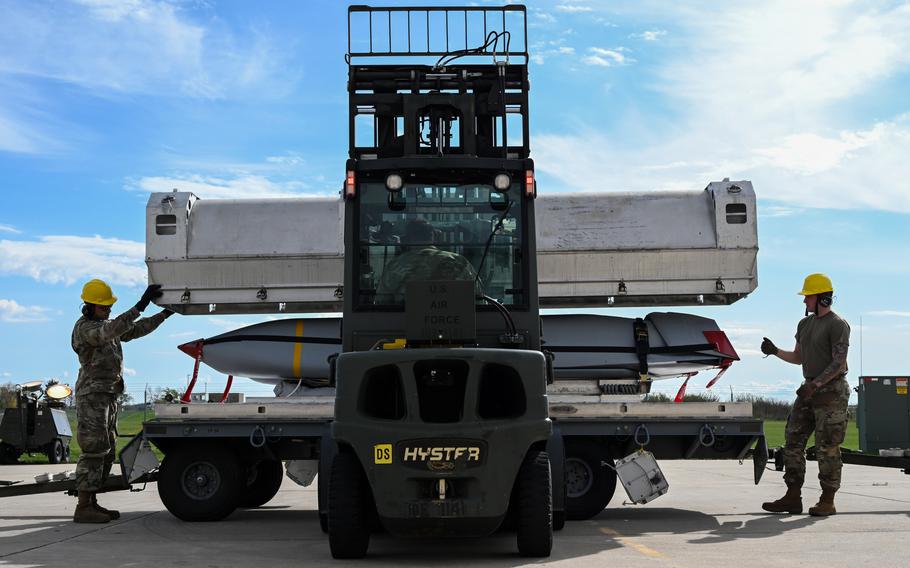
U.S. airmen with the 5th Munitions Squadron load a joint air-to-surface standoff missile at Minot Air Force Base, N.D., Oct. 4, 2023. The State Department this week approved the sale of over 800 extended-range JASSMs to Poland for about $1.8 billion. (Alyssa Bankston/Air Force)
Poland has approval from the United States to purchase about 1,800 missiles in a deal worth nearly $3.7 billion.
The NATO ally will be able to buy missiles of three variants, according to the U.S. Defense Security Cooperation Agency, which on Tuesday released notifications for each missile type.
They include the AGM-158B-2 joint air-to-surface standoff missile with extended range, or JASSM-ER, which is made by Lockheed Martin. The State Department approved the sale of 821 JASSM-ERs to Poland for about $1.8 billion.
It also approved the sale of 745 RTX AIM-120C-8 advanced medium-range air-to-air missiles, or AMRAAMs, for just under $1.7 billion, and 232 RTX AIM-9X Block II Sidewinder short-range air-to-air missiles for roughly $220 million.
All the costs include related equipment, training and support, the Defense Security Cooperation Agency said.
The proposed sales will bolster Poland’s defenses while advancing its air force’s ability to operate with other NATO partners, according to the agency.
All three sales “will support the foreign policy goals and national security objectives of the United States by improving the security of a NATO ally that is a force for political stability and economic progress in Europe,” the agency said.
They would not alter the basic military balance in the region, it added.
Polish inventory includes each of the three missiles, which are launched from aircraft. Warsaw was looking to purchase additional supplies.
The approval of the sales was confirmed the same day Andrzej Duda, the Polish president, met with U.S. counterpart Joe Biden in Washington and said all NATO members should raise their defense spending to 3% of gross domestic product.
The bloc must do more to match Russia’s increase in military spending as the war in Ukraine drags on, Duda said.
NATO members agreed in 2014 to boost their defense spending to 2% of GDP by 2024, after Russia annexed Ukraine’s Crimean Peninsula. However, many members still fall short of the benchmark.
Poland, which shares a border with Ukraine and is aiming to build the strongest land army in Europe by 2026, isn’t one of them. It spends 4% of its GDP on defense, making it No. 1 among the 32 countries in NATO. The U.S. spends above 3% on defense.